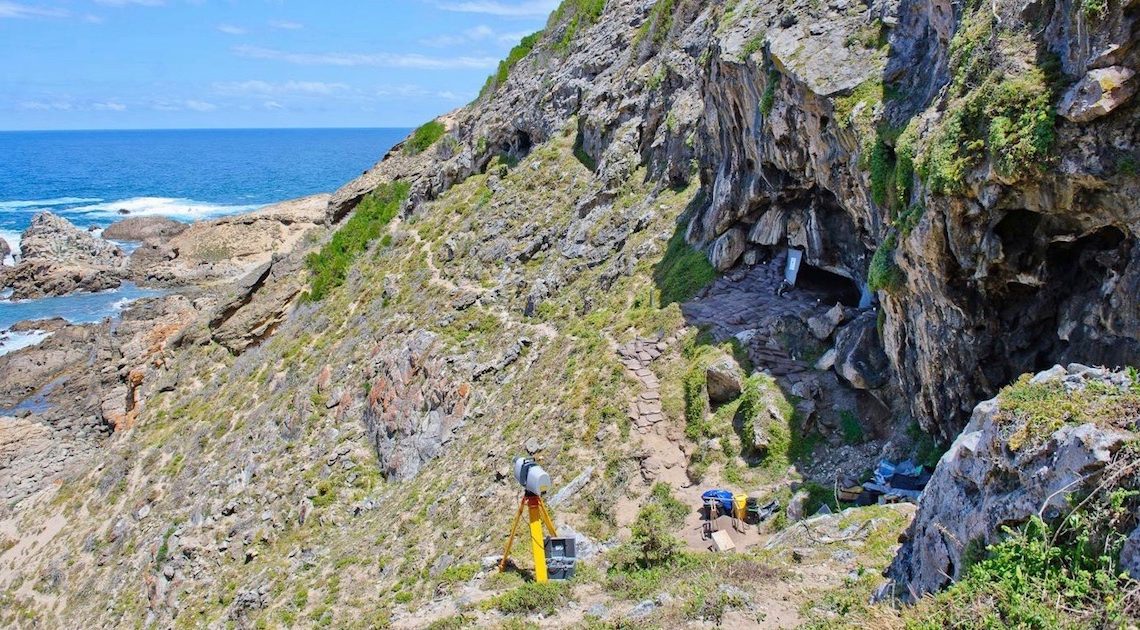
You might also like:
The buzz around the Paleo Route is gaining momentum, albeit in small circles, as often happens with niche tourism product. In September last year, an ochre fragment found at Blombos Cave, about 300km from Cape Town on the southern Cape coast, revealed what is believed to be the earliest known drawing done by a human.
Carbon dating estimates the early ochre ‘crayon’ drawing to be more than 75 000 years old.
Blombos is a world-renowned archaeological site located in Blomboschfontein Nature Reserve, about 300 km east of Cape Town on the Southern Cape coastline. The archaeological record thus far extracted from the cave site has been central in the ongoing debate around the cognitive and cultural origin of early humans.
Among the material thus far unearthed in Blombos are engraved ochre and bone, ochre ‘processing kits’, marine shell beads, refined bone and stone tools, and a broad range of terrestrial and marine faunal remains, including shellfish, birds, tortoise and ostrich egg shell and mammals of various sizes. These are now on display at the Blombos Museum of Archaeology in Stillbaai, about an hour from Blombos.
It could be described as the focal point for archeaological and paleo discoveries in the broader area, with archaeologists and paleontologists having discovered ancient relics and artefacts in the Langeberg Mountain Range inland and in nearby caves along the coast, like Klipgat shelter.
According to Dr Jan De Vynck, an ecologist specialising in palaeo-ecology at Nelson Mandela University’s African Centre for Coastal Palaeoscience (ACCP), who has been on digs on much of the southern Cape coast, Blombos has thrown up a number of significant discoveries for those interested in paleontology, the ‘scientific study of life’, or our evolutionary history.
De Vynck says evidence of 20kg plus musselcrackers (a common local fish species) from 120 000 years ago, has been found at Blombos. This remains the oldest evidence of humans eating fish, which De Vynck’s senior and mentor, Professor Curtis Mairean of the University of Arizona’s School of Human Evolution and Social Change, attributes to the cognitive development that shifted us up the evolutionary ladder.
Fascinating discoveries regarding real ‘paleo-diets’ are also found at sites not open to tourists, like Klasies river in the Tsitsikamma area, east towards Robberg’s Nelson Bay cave (our first Paleo story). A Wits University research team found charred food remains from hearths, providing, according to team leader Professor Sarah Wurz, the first archaeological evidence that “anatomically modern humans were roasting and eating plant starches, such as those from tubers and rhizomes, as early as 120,000 years ago”.
The southern Cape coast is a puzzle of modern human development that researchers like Dr de Vynck and Professors Mairean and Wurtz are still piecing together. “The dawn of civilization was here on the southern cape coast, with the population probably numbering a few hundred people, not thousands,” says De Vynck.
There are a variety of tourism products in the area to accommodate and entertain visitors.
For operators interested in the Blombos cave discoveries, the museum at Stilbaai is about four hours from Cape Town. Famed for its excellent swimming and surfing conditions, Stilbaai also boasts arguably one of South Africa’s finest fynbos gin distillery, Inverroche.
Beyond that, for repeat visitors to South Africa, worth considering is a week-long route incorporating the likes of the shipwreck museum at Bredasdorp, the varied activities and wine farms found at Cape Agulhas-Elim, Swellendam, De Hoop Nature Reserve and the ocean adventure activities in Gansbaai and Walker Bay to round it off.
Source: tourismupdate.co.za



